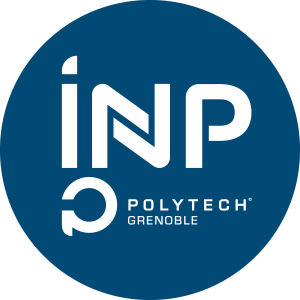Number of hours
- Lectures 8.0
- Projects -
- Tutorials -
- Internship -
- Laboratory works 8.0
- Written tests 2.0
ECTS
ECTS 0.6
Goal(s)
The aim of this course is to present the mechanisms of crystal growth illustrated by examples taken from the field of semiconductor materials. The first part will present the basic principles of epitaxy and the two main growth techniques used in industry. The second part will be devoted to heteroepitaxy, which involves elastic and plastic deformation and leads to 4 distinct growth modes by minimizing the total energy of the system. A third part will deal specifically with the growth of nanostructures (quantum wells, nanowires and quantum boxes) and will open up new approaches such as growth on graphene. In addition, 2 important structural characterization techniques (transmission electron microscopy and grazing incidence X-ray diffraction) will be introduced and used in this course.
Content(s)
Part I: Basic concepts of epitaxy and growth techniques1. Introductiona. What is epitaxy?b. Substrate properties2. Homoepitaxya. Atomistic representation of epitaxial growthb. Growth in terraces on vicinal surfaces3. Description of the main epitaxy techniquesa. Molecular beam epitaxy (MBE)b. Metalorganic chemical vapor deposition (MOCVD) Part II: Heteroepitaxy and growth modes1. Introductiona. Definition of heteroepitaxyb. Definition of critical thicknessc. Surface energy2. Coherent two-dimensional growtha. Reminder of elastic theoryb. Biaxial elastic stress model3. Plastic relaxationa. Type of dislocationsb. Matthews model: energy of formation of lattice mismatch dislocationsc. Calculation of critical thickness4. Elastic relaxationa. Discovering elastic relaxationb. Stranski-Krastanov (SK) transition5. Growth modesa. Coherent two-dimensional growth modeb. Coherent SK growth modec. Two-dimensional growth mode with interface dislocationsd. SK growth mode with interface dislocationse. Determination of the growth mode Part III: Advanced growth of nanostructures1. Growth of semiconductor nanostructuresa. Quantum wells (2D nanostructures)b. Nanowires (1D nanostructures)c. Quantum boxes (0D nanostructures)2. Organised selective growtha. Principleb. Nanostructure growth formc. Application: Epitaxial Lateral Overgrowth (ELO)3. Hybrid growth on graphenea. CVD growth of grapheneb. ‘Remote epitaxyc. Van der Walls epitaxy
Prerequisites- Basics of Continuum Mechanics
- Basics of Crystallography
- Basics of semiconductor physics
EXAM
The course exists in the following branches:
- Curriculum - MAT - Semester 9
Course ID : KAMA9M26
Course language(s): 
You can find this course among all other courses.



